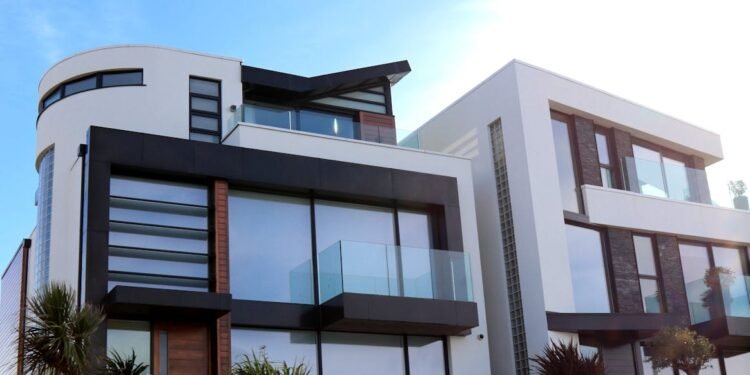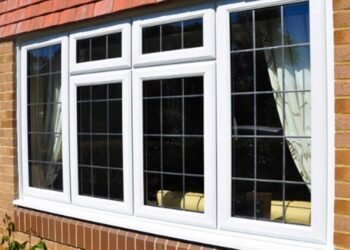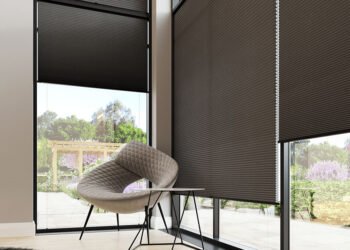Modern architecture, a style characterized by an emphasis on form, function, and simplicity, has increasingly become a favored choice for homeowners looking to design or remodel their homes. This architectural style breaks away from the complex designs and ornaments of traditional architecture, opting instead for clean lines and open spaces. Incorporating modern architecture into home design not only enhances the aesthetic appeal but also improves the functionality of living spaces, making them more adaptable to today’s lifestyles.
1. Understand the Fundamentals of Modern Architecture
To effectively incorporate modern architecture into your home, it’s essential to grasp its core principles. Modern architecture is known for its simplicity and clarity in design. It often involves a minimalist approach with limited use of accessories, focusing on the structure’s space rather than its decor. Characteristics such as flat roofs, large windows, and open floor plans are hallmark features. Understanding these elements can guide homeowners in making decisions that align with the aesthetics and functionality of modern design.
2. Utilize Natural Light
One of the standout features of modern architecture design is the emphasis on natural light. This can dramatically transform the living space, making it feel larger and more welcoming. To maximize natural light, consider designing floor-to-ceiling windows that not only illuminate the interior but also offer an unobstructed view of the outdoors. Another strategy is to use skylights and translucent materials that allow light to permeate through different areas of the home. This thoughtful integration of natural light not only enhances the mood within the home but also reduces dependence on artificial lighting during the day.
3. Open Floor Plans
Open floor plans are a signature element of modern homes. This design concept involves fewer walls and barriers, creating a more connected and fluid environment between the kitchen, living room, and dining area. An open floor plan makes the home appear more spacious and facilitates a better flow of movement. It also enhances social interaction among family members and guests by creating a shared space where activities can overlap without physical separation. When designing an open floor plan, it’s important to maintain a cohesive color scheme and flooring to ensure continuity and harmony throughout the home.
4. Incorporate Sustainable Materials
Sustainability is a critical aspect of modern architecture. Modern design often incorporates materials that are not only environmentally friendly but also durable and low maintenance. Some popular choices include recycled steel, which provides excellent strength and durability, and bamboo, known for its sustainability and aesthetic appeal. Precast concrete is another option that offers versatility in design while being robust. Using these materials reflects a commitment to environmental responsibility while adhering to modern architectural aesthetics.
5. Focus on Minimalist Color Palettes
The color scheme in a modern home is usually defined by its simplicity and sophistication. Neutral colors like white, gray, and beige dominate modern interiors because they create a clean, uncluttered look. These colors also have the advantage of reflecting more natural light, which can make the spaces appear larger and more open. To add depth and interest, consider incorporating shades of black or navy blue as accents through furniture or artwork. This minimalist approach to color not only enhances the modern feel of the home but also allows architectural elements themselves to stand out.
6. Invest in Smart Home Technology
Modern architecture isn’t just about aesthetics—it also embraces innovation and efficiency, which is where smart home technology comes in. Integrating smart devices into your home design can enhance both functionality and convenience. Consider smart thermostats, which maintain optimal indoor temperatures with minimal energy use, or smart lighting systems that adjust based on the time of day and occupancy, contributing to energy efficiency. Smart security systems, including cameras and motion sensors, can also be seamlessly integrated into modern designs, offering both safety and sleekness without compromising the home’s style. These technologies not only cater to the modern homeowner’s needs but also ensure that the house remains cutting-edge and sustainable.
7. Use Glass and Steel Elements
Glass and steel are materials synonymous with modern architecture, celebrated for their sleek look and structural capabilities. Incorporating elements such as large glass windows or steel beams can dramatically influence the aesthetic of your home. Glass not only adds a visual expansiveness but also fosters a closer connection to the outdoor environment. Steel, known for its strength and versatility, can be used in both the framework and finer details like staircases or balconies. Utilizing these materials can introduce a sense of modern sophistication and enduring quality to your home design.
8. Embrace Geometric Forms and Asymmetrical Designs
Modern architecture often features geometric shapes and asymmetrical designs that make structures stand out visually. These designs are not just visually appealing but also functional, often allowing for more natural light and space utilization. Incorporating irregular shapes, sharp lines, or block-like structures into your home can create focal points that draw the eye while offering unique layout configurations. Embracing these elements in your home’s architecture can deliver a striking aesthetic that is both modern and timeless.
9. Indoor-Outdoor Flow
Creating a seamless indoor-outdoor flow is a key element in modern home designs, emphasizing a harmonious connection with nature. This can be achieved through the strategic placement of sliding doors, consistent flooring that extends from inside to the outdoor spaces, and large windows that offer views of the surrounding landscape. Designing an outdoor living area that complements the interior is another way to enhance this flow, providing a smooth transition that expands the living space and brings a sense of the outdoors inside.
10. Choose Modern Furnishings
Selecting the right furnishings is crucial to complementing the modern architecture of your home. Opt for pieces that mirror the clean lines and minimalistic style of modern design. Furniture with a functional design and neutral colors works best, avoiding overly ornate details that could clash with the simplicity of the surroundings. Additionally, consider the scale of your furniture; oversized pieces can crowd a room, while appropriately sized furniture can help maintain the open, airy feel typical of modern designs.
Conclusion
Incorporating modern architecture into your home design offers a blend of aesthetic appeal, functionality, and sustainability. By understanding the principles of modern design, utilizing natural light, embracing open floor plans, and choosing appropriate materials and colors, you can create a space that is both beautiful and practical. Integrating smart technology and maintaining a connection with the outdoors further enhance the livability and modernity of your home. These tips will help you achieve a home that is not only a place of comfort and style but also a reflection of modern architectural trends.












